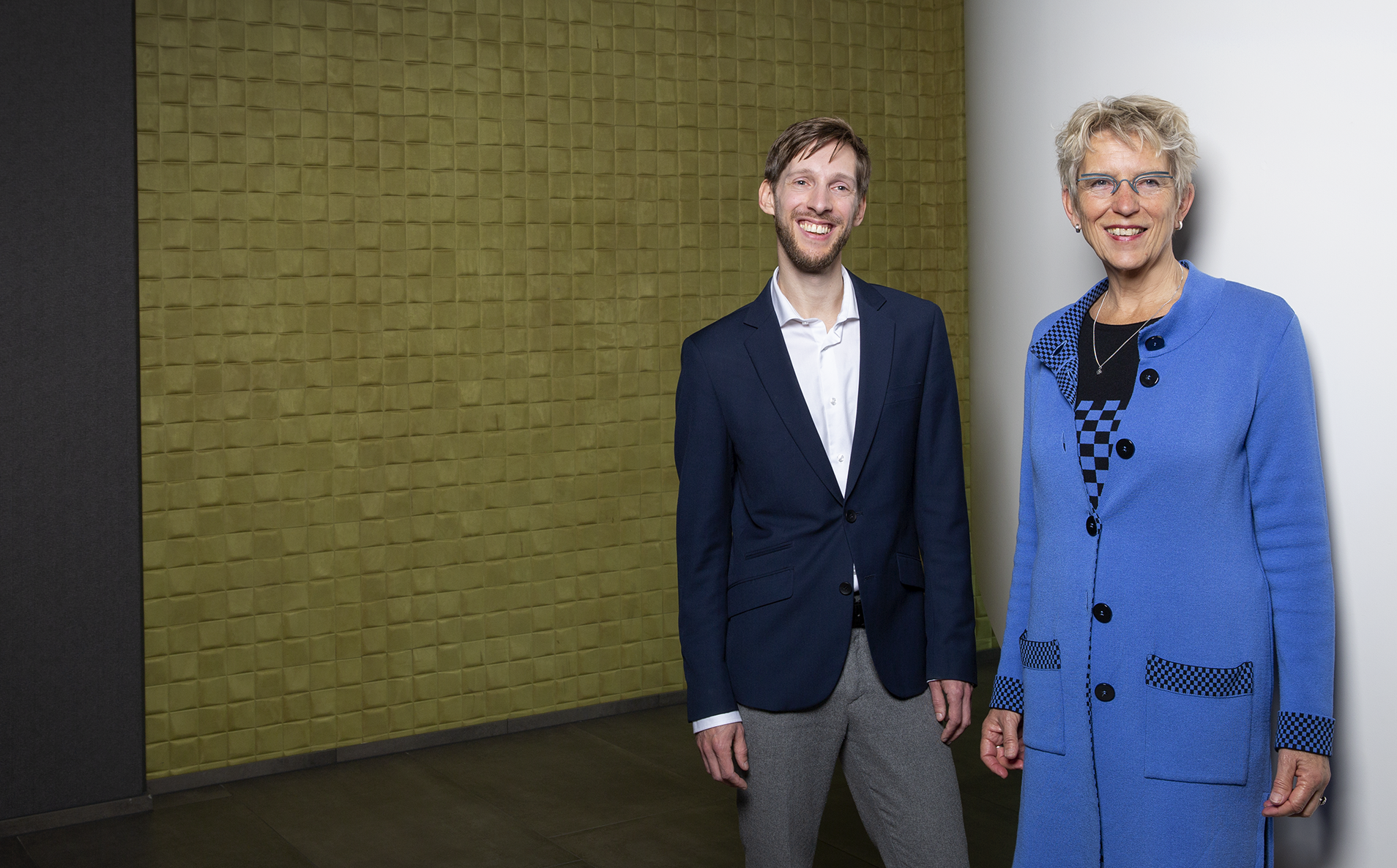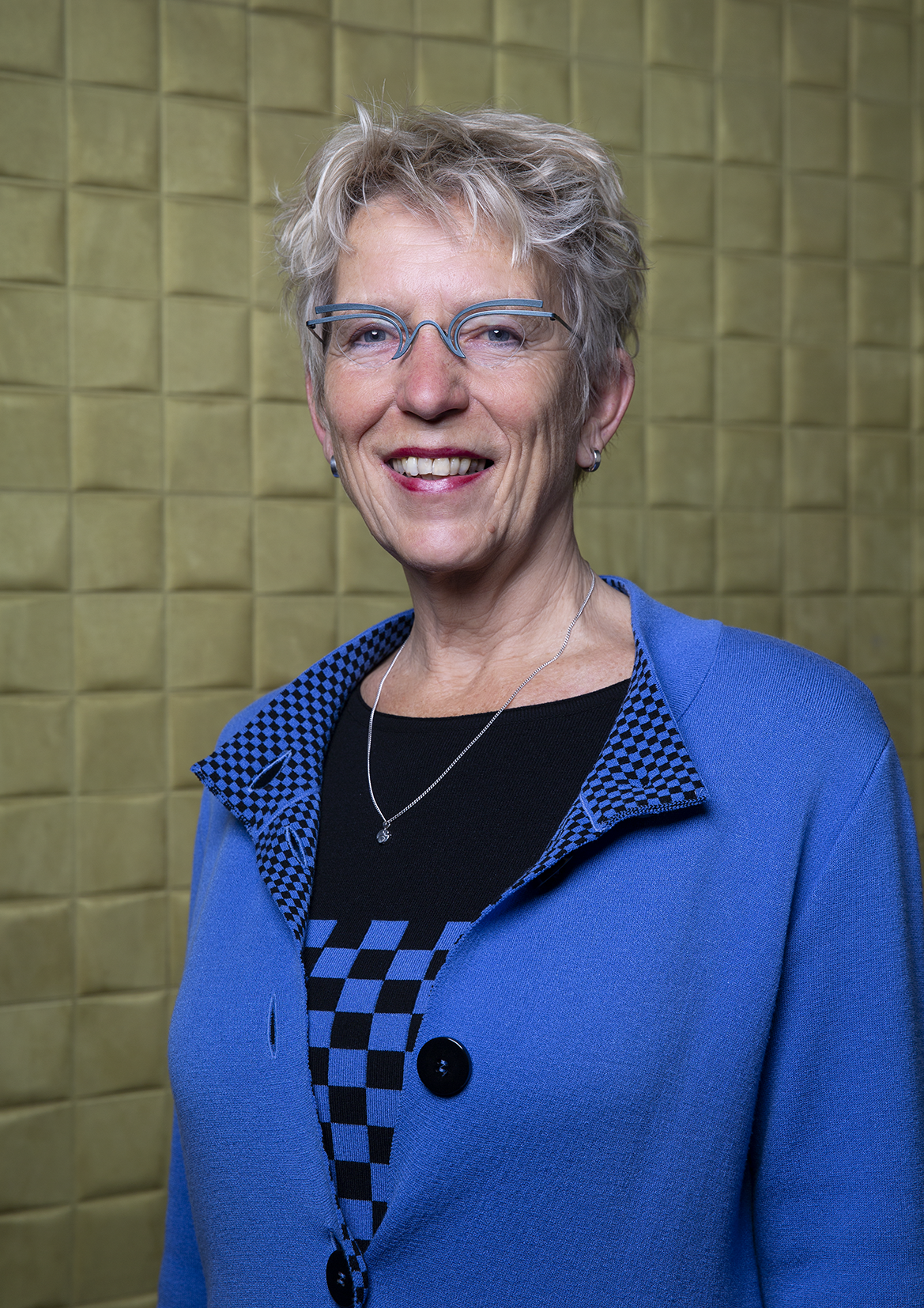
The Active & Assisted Living programme (AAL) has not yet reached its final destination. The (finished) projects will continue their journeys. Nevertheless, we make a short stop at this point. Programme managers Geja Langerveld and Rik Wisselink look back at the trajectory of AAL until now. What have we learned? And which lessons for the future can we take with us?
Successful innovations are never isolated events. The proper development of digital innovations plus their large scale integration into practice require an entire ecosystem + Such a system includes various parties, which are needed in the different stages of the process. This concerns users and user organisations, developers, entrepreneurs and knowledge institutions. And certainly don’t forget financiers and (local or regional) authorities either. Sooner or later, you need all of these parties.

Seniors in the centre
Geja Langerveld has been involved in AAL right from the start. ‘The projects have taught us a lot about the factors that increase the chances of success. The first one is clearly documented in the 5 travel stories; technological solutions should address the wishes and aspirations of seniors. This is based on the principle that ‘ageing is not a disease’.’ If we can change the image of ageing, explains Langerveld, then there is more room for emphasizing the importance of vitality, social connectedness and meaningful activities. As part of care and support, but equally in everyday life. This raises other questions as well: how do we ensure that technological solutions are not stigmatising? Are they fun and handy instead of just (patronizing) “in your own best interest”?
A shared goal
Rik Wisselink lists a second success factor: collaborating with parties that complement you in terms of knowledge and skills. And with whom you share a drive to achieve results in practice. ‘Both elements are needed to continue your journey and accomplish genuine change.’ Thirdly, it is important to use the strengths of different parties at the right moment. Wisselink: ‘For instance, to scale up as a minor software development company you need a large partner who assumes responsibility for the marketing and sales. As a small party, you cannot hope to do that all on your own.’
Scientific research
A fourth and last factor, states Langerveld, is the awareness that traditional scientific research to prove the effectiveness of a solution is not useful during a development project ‘Tests and evaluations should mainly contribute to optimisation of an innovation. It can be employed to get an indication of the added value for different groups of users. But only when a solution is technically robust, it is worthwhile to investigate the effects from a scientific perspective.’
Combined solutions
These are important lessons from the AAL programme. But that doesn’t mean we’re fully there yet, conclude both programme managers. In addition, certain conditions need to be in place to achieve market success. For example, interoperability +, so that you can combine different solutions according to individual wishes and needs. Wisselink: ‘Combined solutions can greatly benefit seniors. Take video calling or applications for the fun things in life, from reading the newspaper to playing games. This can be very easily combined with lifestyle coaching and support for independent living.’ In addition, a digital infrastructure to exchange information is an important condition. And attention for people’s digital skills: ‘If people know how to use an ICT solution, it is more likely that they will use it.’
Benefits for society
Raising funds for digital innovations in the area of quality of life and independence is difficult. It is hard to find private investors for small (start-up) companies who want to launch these solutions on the market. Langerveld: ‘Investors often show little if any interest. The market is too fragmented, or there is no clear, direct demand from end users. And neither is there much (public) funding available for prevention, even though well-being has a positive influence on vitality and health. And supporting independent living can postpone or even prevent the need for professional care. That is exactly what is needed in view of the current personnel shortages.’ In other words, there is a tension between direct benefits in euros and the realisation of added value for society.

Cross-sectoral agreements
Structural funding for the use of digital solutions in the home is equally complex. Wisselink: ‘The problem is that the costs and benefits often land on the plates of different parties. For example, if a municipality invests in supporting technology to ensure that someone can live at home longer, then the financial benefits are for the funding body of nursing homes. They have fewer clients to pay for.’ Furthermore, many AAL innovations combine different functions such as day-structuring, lifestyle coaching and video calling to facilitate both social contacts and remote care. Different funding systems are responsible for different functions: Wmo +, Zvw + and Wlz +. In fact, such innovations would require cross-sectoral agreements about funding, says Wisselink. ‘This will be really difficult since it is already a problem to realise agreements within just a single sector. Health insurers and care administration offices all have their own rules and criteria for funding digital care and support, and the same applies to municipalities. That means an innovation may be reimbursed in one region or municipality, but not in another.’
Demonstrating added value needs collaboration
What would help is a clear substantiation of the added value of digital innovations. What does their use yield in terms of quality, accessibility of care and finances? Several parties are now working on defining joint criteria to evaluate the added value. This includes parties such as Vilans, VitaValley and the Digital Care Knowledge Centre of Dutch health insurers organised in Zorgverzekeraars Nederland. They want to provide cross-sectoral social business cases to document the costs and benefits for all parties involved. These outcomes can serve as “ammunition” for funding contracts between providers and financiers, either health insurers, care administration offices and/or municipalities.
Need for acceleration
Despite the obstacles, both AAL programme managers are optimistic. For example, in the cure a clear movement is visible to accelerate the digitalisation of hospital care. Digital outpatient clinics are not such a rare thing anymore. Langerveld: ‘A similar acceleration is desperately needed in prevention, support and care. And it would help if the focus shifted more to health instead of care. That we aim at healthy and pleasant ageing instead of focussing on what people can no longer do.’
The wood and the trees
Where do I find information about available smart innovations? This is a frequently heard question within the AAL programme. A good place to start is Zorg van Nu (Care Today). This portal lists many available smart solutions and care innovations, and describes how, when and why to use these. However, it is still a challenge to find tailored solution to a specific question. To make it easier to access information about the added value of innovations, the Digital Care Knowledge bank is now being developed, a portal for the long-term care sector. Vilans is collaborating with many parties in long-term care and the research field to achieve this. The knowledge bank should lead to a uniformity of language and good standard methods for evaluations and business cases. Bringing together all the outcomes in one place will make it easier to find information about the added value of innovations.
Concluding remarks by
programme managers Rik Wisselink
and Geja Langerveld
Capitalise on the opportunities of technology for seniors
Ecosysteem
An ecosystem is a web of people and organisations that are linked with each other around realising care and health.
Wmo
Social Support Act, which is realised by the municipalities.
Zvw
Health Insurance Act, which is realised by the health insurers
Wlz
Long-term care act, which is realised by the care administration offices
Interoperability
Interoperability refers to the possibility of systems to communicate with each other and exchange information.
x